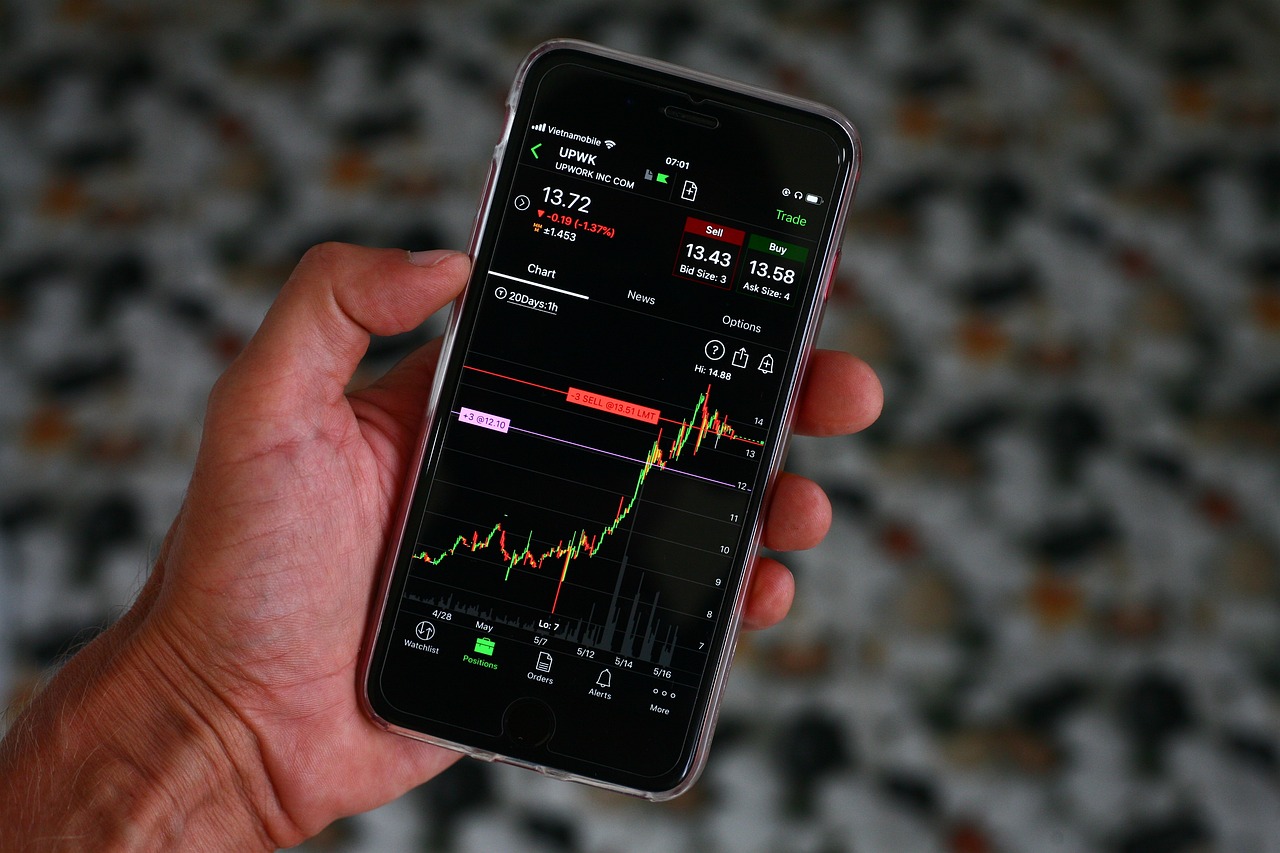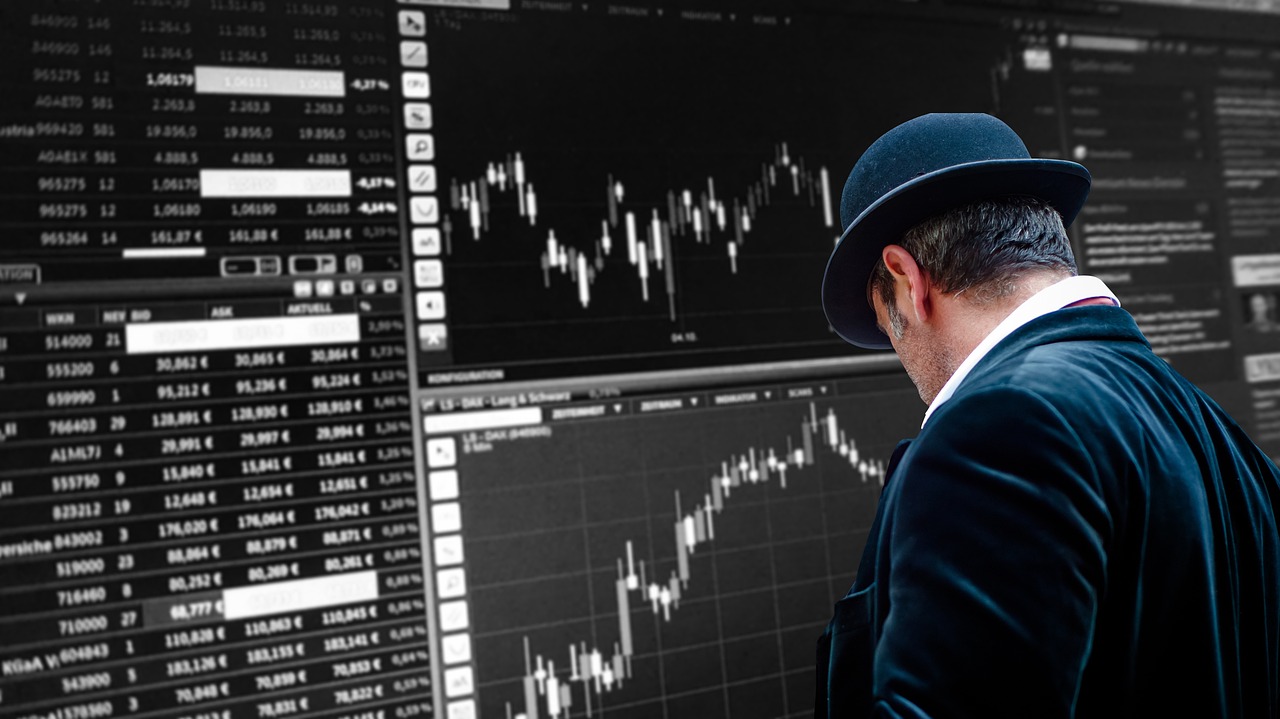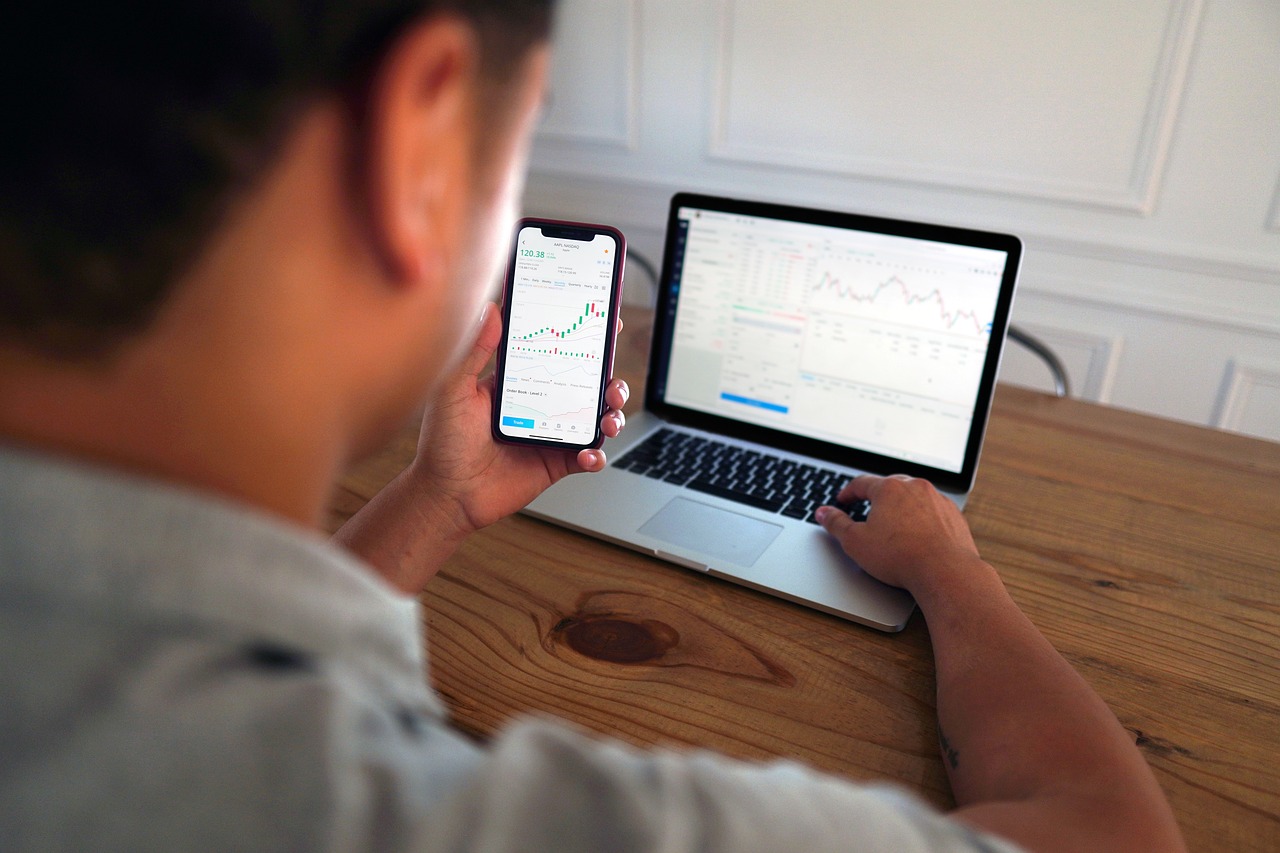Combining Technical and Fundamental Analysis in Trading
In the world of trading, making informed decisions is crucial for success. Traders often find themselves at a crossroads, faced with the choice of relying solely on **technical analysis** or **fundamental analysis**. However, the most successful traders understand that combining these two approaches can lead to a more comprehensive understanding of the market. By leveraging the strengths of both analyses, traders can enhance their decision-making process and ultimately improve their trading outcomes.
Technical analysis focuses on price movements and trading volumes, allowing traders to predict future market behavior based on historical data. It involves various tools and indicators that help identify trends, entry points, and exit strategies. On the other hand, fundamental analysis dives deeper into the economic factors that drive market movements. This includes examining company performance, economic indicators, and market news to assess the intrinsic value of an asset. By integrating both analyses, traders can create a well-rounded strategy that not only considers price action but also the underlying factors that influence market sentiment.
Imagine you're navigating a ship in turbulent waters. Relying solely on the stars (technical analysis) might get you close to your destination, but understanding the currents and weather patterns (fundamental analysis) is essential for a safe and successful journey. Just as a skilled navigator combines both celestial navigation and environmental awareness, a savvy trader merges technical and fundamental insights to chart a course through the complexities of the financial markets.
Moreover, integrating these analyses allows traders to develop a hybrid trading strategy that enhances their ability to make informed decisions. This strategy harnesses the predictive power of technical indicators while grounding those predictions in the realities of economic conditions. For instance, a trader might use moving averages to identify a bullish trend, but they would also pay attention to upcoming earnings reports or economic data releases that could impact that trend. By combining these perspectives, traders can better assess risks and opportunities, ultimately leading to more successful trades.
Additionally, effective risk management is a critical aspect of trading that benefits from this integration. By understanding both the technical indicators and the fundamental factors at play, traders can implement strategies that protect their capital while maximizing potential returns. This dual approach allows for better risk assessment, enabling traders to make adjustments based on real-time market conditions.
In conclusion, the integration of technical and fundamental analysis in trading is not just a trend; it's a powerful strategy that can significantly enhance decision-making. By considering both price movements and underlying economic factors, traders can navigate the markets with greater confidence and precision. Whether you're a seasoned trader or just starting, embracing this combined approach could be the key to unlocking your trading potential.
- What is the main difference between technical and fundamental analysis?
Technical analysis focuses on price movements and patterns, while fundamental analysis examines the economic factors that influence asset values. - Can I use both analyses simultaneously?
Absolutely! Combining both analyses allows for a more comprehensive view of the market and can improve decision-making. - What are some common technical indicators?
Common indicators include moving averages, Relative Strength Index (RSI), and MACD, which help traders gauge market momentum. - How does fundamental analysis impact trading strategies?
Fundamental analysis helps traders understand market sentiment and economic conditions, allowing them to make informed trades based on asset value.

Understanding Technical Analysis
Technical analysis is an essential tool for traders seeking to navigate the complex world of financial markets. At its core, this approach focuses on analyzing price movements and trading volumes to forecast future market behavior. Imagine trying to predict the weather by only looking at the clouds; similarly, traders use historical price data to identify patterns and trends that can guide their decision-making. By examining charts and utilizing various indicators, traders can make informed predictions about where the market is headed.
One of the fundamental principles of technical analysis is the idea that market sentiment drives price movements. Traders believe that all relevant information—be it news, earnings reports, or economic indicators—is already reflected in the price of an asset. This means that by studying price charts, traders can gain valuable insights into market psychology. For instance, if a stock's price consistently bounces off a certain level, it might indicate a strong support level, suggesting that buyers are stepping in at that price point. Conversely, if the price consistently fails to break through a resistance level, it may signal that sellers are dominating.
To effectively navigate the world of technical analysis, traders rely on a variety of tools and indicators. Some of the most popular include:
- Moving Averages: These help smooth out price data and identify trends over specific periods.
- Relative Strength Index (RSI): This measures the speed and change of price movements to indicate overbought or oversold conditions.
- MACD (Moving Average Convergence Divergence): This indicator shows the relationship between two moving averages of a security’s price.
Each of these tools serves a unique purpose and can provide traders with different insights into market conditions. For example, moving averages can help identify the overall trend, while the RSI can signal potential reversals. By combining these indicators, traders can create a more comprehensive view of the market, enhancing their ability to make strategic decisions.
In addition to individual indicators, traders often analyze chart patterns to gain further insights. Patterns such as head and shoulders, triangles, and flags can reveal potential future price movements based on historical behavior. Understanding these patterns is akin to reading the language of the market; it requires practice and a keen eye to recognize the subtle signals that can lead to profitable trades.
Ultimately, technical analysis is about more than just crunching numbers; it’s about interpreting the story told by the price movements. As traders become more adept at recognizing patterns and utilizing indicators, they can make more informed decisions that align with their trading strategies. By embracing both the art and science of technical analysis, traders can significantly enhance their chances of success in the fast-paced world of trading.

Understanding Fundamental Analysis
Fundamental analysis is like the detective work of the trading world. It digs deep into the economic indicators, company performance, and market news to evaluate the intrinsic value of an asset. Imagine trying to buy a car; you wouldn't just look at its price tag, right? You'd want to know about its engine, mileage, history, and how it performs on the road. Similarly, traders use fundamental analysis to uncover what truly drives the value of assets, helping them make informed decisions.
This analysis goes beyond just numbers on a chart; it delves into the economic landscape, considering factors like interest rates, inflation, and overall economic growth. For instance, a rising interest rate might indicate a strong economy, but it could also lead to a decrease in consumer spending, which might negatively impact company profits. Understanding this interplay is crucial for traders who want to anticipate market movements.
Some of the key components of fundamental analysis include:
- Earnings Reports: These are quarterly statements released by companies that detail their financial performance. A strong earnings report can boost a stock's price, while a disappointing one can cause it to plummet.
- Economic Data Releases: Data such as GDP growth, unemployment rates, and consumer confidence can provide insights into the health of the economy and influence market sentiment.
- Geopolitical Events: Political stability, trade policies, and international relations can significantly impact market dynamics, making it essential for traders to stay informed about global events.
By analyzing these factors, traders can gauge market sentiment and make predictions about future price movements. For example, if a company consistently reports strong earnings and the overall economy is thriving, it may be a good time to buy its stock. Conversely, if economic indicators suggest a downturn, it might be wise to reconsider holding onto certain assets.
In summary, fundamental analysis provides a comprehensive view of market dynamics that goes beyond mere price movements. It enables traders to understand the underlying factors that can influence asset value, leading to more informed trading decisions. By integrating this analysis with technical indicators, traders can create a robust trading strategy that enhances their chances of success in the market.

Key Indicators in Technical Analysis
When diving into the world of trading, understanding technical indicators is like having a compass in a dense forest. These indicators help traders navigate the unpredictable terrain of price movements and trading volumes. They serve as tools to identify trends, potential entry points, and exit strategies, ultimately guiding traders towards informed decisions. Let’s explore some of the most essential indicators that can elevate your trading game.
One of the most popular tools in technical analysis is the Moving Average. This indicator smooths out price data by creating a constantly updated average price. By eliminating the noise from random price fluctuations, moving averages help traders identify the direction of the trend. There are different types of moving averages, such as the Simple Moving Average (SMA) and the Exponential Moving Average (EMA). The SMA calculates the average price over a specific number of periods, while the EMA gives more weight to the most recent prices, making it more responsive to new information.
Another crucial indicator is the Relative Strength Index (RSI). This momentum oscillator measures the speed and change of price movements, providing insights into whether an asset is overbought or oversold. The RSI ranges from 0 to 100, with readings above 70 typically indicating an overbought condition, while readings below 30 suggest an oversold condition. Traders often use the RSI to identify potential reversal points in the market, making it a valuable tool for timing their trades.
Lastly, the Moving Average Convergence Divergence (MACD) is an essential indicator that combines elements of both trend and momentum analysis. It consists of two moving averages and a histogram, which helps traders identify bullish or bearish momentum. When the MACD line crosses above the signal line, it can indicate a potential buy signal, while a crossover below may suggest a sell signal. This indicator provides a comprehensive view of market momentum, making it easier for traders to spot changes in trend direction.
To summarize, here’s a quick overview of these key indicators:
| Indicator | Description | Purpose |
|---|---|---|
| Moving Average | Smooths out price data to identify trends | Trend identification |
| Relative Strength Index (RSI) | Measures speed and change of price movements | Identifying overbought or oversold conditions |
| Moving Average Convergence Divergence (MACD) | Combines trend and momentum analysis | Spotting changes in market momentum |
Incorporating these indicators into your trading strategy can significantly enhance your ability to read the market. However, it's crucial to remember that no single indicator is foolproof. Traders often use a combination of these tools to confirm their analysis and make more informed decisions. By understanding the strengths and weaknesses of each indicator, you can create a robust trading strategy that aligns with your goals.
- What is the best technical indicator for beginners?
Many beginners find the Moving Average to be the most straightforward indicator to start with, as it helps identify trends without overwhelming complexity.
- Can I rely solely on technical indicators for trading?
While technical indicators provide valuable insights, it's essential to combine them with other forms of analysis, such as fundamental analysis, to make well-rounded trading decisions.
- How often should I check my indicators?
This depends on your trading style. Day traders may check their indicators multiple times a day, while swing traders might look at them on a daily or weekly basis.

Moving Averages Explained
Moving averages are like the trusty compass for traders navigating the often turbulent seas of the financial markets. They serve as a vital tool in technical analysis, helping to smooth out price data over specific periods to reveal underlying trends. When you think about it, price movements can be erratic—like a rollercoaster ride—so having a moving average can help you see the bigger picture. By filtering out the noise, moving averages allow traders to focus on the essential direction of price action.
There are several types of moving averages, but the two most commonly used are the Simple Moving Average (SMA) and the Exponential Moving Average (EMA). Each type has its unique characteristics and applications:
- Simple Moving Average (SMA): This is calculated by taking the average of a set number of past prices. For example, a 10-day SMA adds up the closing prices of the last ten days and divides by ten. It's straightforward but can lag behind current price movements.
- Exponential Moving Average (EMA): Unlike the SMA, the EMA gives more weight to recent prices, making it more responsive to new information. This can be particularly useful in fast-moving markets where timely decisions are crucial.
Traders often use moving averages to identify potential buy or sell signals. For instance, when the price crosses above a moving average, it can indicate a bullish trend, suggesting that it might be a good time to buy. Conversely, when the price crosses below the moving average, it may signal a bearish trend, prompting traders to consider selling. This method of using moving averages to generate signals is often referred to as the crossover strategy.
Another way to utilize moving averages is by looking at the distance between the price and the moving average. A significant gap can indicate that the asset is either overbought or oversold. This is where the concept of convergence and divergence comes into play. When prices are diverging from the moving average, it can suggest a potential reversal is on the horizon. In essence, moving averages not only help in identifying trends but also in gauging market sentiment.
To illustrate the differences between SMA and EMA, consider the following table:
| Feature | Simple Moving Average (SMA) | Exponential Moving Average (EMA) |
|---|---|---|
| Calculation Method | Averages past prices equally | Gives more weight to recent prices |
| Responsiveness | Slower to react | Faster to react |
| Use Case | Long-term trends | Short-term trends |
Ultimately, moving averages are not just numbers on a chart; they are powerful indicators that can help traders make informed decisions. By understanding how to interpret these averages, traders can better position themselves to capitalize on market movements. So, whether you're a seasoned pro or just starting, integrating moving averages into your trading strategy can be a game-changer.

Relative Strength Index (RSI)
The is a powerful momentum oscillator that helps traders gauge the speed and change of price movements. Developed by J. Welles Wilder Jr., this technical indicator ranges from 0 to 100 and is primarily used to identify overbought or oversold conditions in a market. But what does that really mean for you as a trader? Think of the RSI as your market pulse, giving you insights into whether an asset is heating up or cooling down.
Typically, an RSI reading above 70 indicates that an asset is overbought, suggesting that it may be due for a price correction. Conversely, an RSI reading below 30 signals that an asset is oversold, which may present a buying opportunity. This dual nature of the RSI makes it an essential tool for traders looking to optimize their entry and exit points. However, relying solely on RSI without considering other factors can lead to missed opportunities or false signals.
To make the most of the RSI, traders often look for divergence between the RSI and the price action. For example, if the price of an asset is making new highs while the RSI is failing to reach new highs, this divergence may suggest a weakening trend, potentially signaling a reversal. Such insights are invaluable in developing a more nuanced trading strategy.
Let's take a closer look at how the RSI is calculated:
| Step | Description |
|---|---|
| 1 | Calculate the average gain and average loss over a specified period (usually 14 days). |
| 2 | Calculate the Relative Strength (RS) by dividing the average gain by the average loss. |
| 3 | Calculate the RSI using the formula: RSI 100 - (100 / (1 + RS)). |
By understanding this calculation, traders can better appreciate how the RSI reflects market conditions. However, it’s essential to remember that no indicator is foolproof. The RSI can sometimes produce false signals, especially in strongly trending markets. Therefore, it's advisable to use the RSI in conjunction with other indicators and analysis methods for a more comprehensive view.
In summary, the Relative Strength Index serves as a critical tool in a trader's arsenal, offering insights into market momentum and potential reversal points. By mastering the RSI, you can enhance your trading strategy and make more informed decisions. So, the next time you’re analyzing a chart, don’t forget to check the RSI—it might just reveal the hidden gems of trading opportunities!
- What is a good RSI level to use for trading? While levels of 70 and 30 are commonly used, traders may adjust these thresholds based on their trading style and the asset's volatility.
- Can RSI be used for all types of assets? Yes, RSI can be applied to stocks, forex, commodities, and cryptocurrencies, making it a versatile tool for various markets.
- How often should I check the RSI? The frequency of checking the RSI depends on your trading strategy; day traders may check it multiple times a day, while long-term investors might look at it weekly or monthly.

Key Indicators in Fundamental Analysis
When it comes to trading, understanding the underlying factors that drive market movements is crucial. Fundamental analysis focuses on evaluating the intrinsic value of an asset by examining various economic indicators, company performance metrics, and market news. By doing so, traders can gain insights into the overall health of the market and make informed decisions. So, what are the key indicators that every trader should keep an eye on?
One of the most significant indicators is the earnings report. This report provides a snapshot of a company's profitability and can greatly influence its stock price. When a company reports earnings that exceed analyst expectations, it often leads to a surge in stock prices. Conversely, disappointing earnings can result in a sharp decline. Therefore, being aware of earnings release dates and understanding the context behind the numbers is essential.
Next up, we have economic data releases. These include reports like GDP growth, unemployment rates, and inflation statistics. For instance, a strong GDP growth report signals a healthy economy, which can be bullish for the stock market. On the other hand, rising unemployment rates may indicate economic troubles ahead, leading traders to adjust their positions accordingly. Keeping track of these economic indicators helps traders gauge market sentiment and make decisions that align with broader economic trends.
Another critical factor to consider is geopolitical events. Events such as elections, trade agreements, or conflicts can have a profound impact on market dynamics. For example, a sudden political upheaval in a major economy can lead to increased volatility in global markets. Traders who stay informed about geopolitical developments can better anticipate market reactions and position themselves to capitalize on opportunities or mitigate risks.
To sum it up, the key indicators in fundamental analysis include:
- Earnings Reports: Assessing company profitability and performance.
- Economic Data Releases: Understanding broader economic conditions.
- Geopolitical Events: Monitoring political developments that affect market stability.
By integrating these indicators into their trading strategies, traders can develop a more comprehensive view of the market, allowing them to make decisions that are not solely based on price movements but also on the underlying economic realities. This holistic approach can significantly enhance trading outcomes.
1. What is the importance of fundamental analysis in trading?
Fundamental analysis helps traders understand the intrinsic value of an asset by evaluating economic indicators, company performance, and market conditions. This understanding aids in making informed trading decisions.
2. How do earnings reports affect stock prices?
Earnings reports provide insights into a company's profitability. Positive earnings can lead to stock price increases, while negative earnings can result in declines.
3. Why should traders pay attention to economic data releases?
Economic data releases provide a snapshot of the overall health of an economy. They influence market sentiment and can lead to significant price movements in various assets.
4. How do geopolitical events impact trading?
Geopolitical events can create uncertainty and volatility in the markets. Traders who are aware of these events can adjust their strategies to either capitalize on opportunities or protect against potential losses.

Integrating Both Analyses
When it comes to trading, relying solely on one type of analysis can often lead to incomplete insights. By integrating both technical and fundamental analysis, traders can create a more robust and effective strategy. Imagine trying to solve a puzzle with only half of the pieces; you might get a vague picture, but it won’t be complete. The same goes for trading. Each analysis offers unique strengths, and when combined, they provide a fuller understanding of market dynamics.
Technical analysis is like having a detailed map of the terrain, showing you where the highs and lows are, while fundamental analysis provides the context behind those movements—like understanding why a mountain is there in the first place. By leveraging both, traders can identify entry and exit points with greater precision and confidence.
One effective method to integrate these analyses is to use fundamental analysis to inform your overall market outlook and then apply technical analysis to pinpoint the best timing for your trades. For instance, if a company is about to release its earnings report, a trader might examine the fundamentals to gauge whether the stock is undervalued or overvalued. Following this, they can utilize technical indicators to identify optimal buy or sell signals around the report's release.
In addition, it's essential to consider how market sentiment can shift based on fundamental news. For example, if a positive economic indicator is released, traders might see a surge in buying activity. Here, technical analysis can help identify the momentum and whether to jump in or hold back. This kind of synergy not only enhances trading strategies but also leads to improved risk management.
To effectively merge these approaches, traders can follow a few guidelines:
- Start with a fundamental analysis to understand the broader market context.
- Use technical indicators to time your trades based on the fundamental insights.
- Continuously monitor both analyses to adjust your strategy as new information becomes available.
By developing a hybrid trading strategy that incorporates both analyses, traders can navigate the complexities of the market with greater ease. This approach not only enhances decision-making but also allows for better risk assessment. After all, the market is not just about numbers; it’s a living entity influenced by a myriad of factors.
In summary, integrating technical and fundamental analysis is not just a best practice; it’s a necessity for traders looking to optimize their strategies and improve their overall performance. By embracing both perspectives, traders can make more informed decisions, adapt to changing market conditions, and ultimately, enhance their trading outcomes.
1. What is the main benefit of combining technical and fundamental analysis?
Combining both analyses provides a more comprehensive view of the market, allowing traders to make better-informed decisions and improve their trading outcomes.
2. Can I rely on one type of analysis more than the other?
While both analyses have their strengths, relying on one exclusively can lead to missed opportunities. It's generally recommended to use both to cover all bases.
3. How do I start integrating both analyses into my trading strategy?
Begin by conducting a thorough fundamental analysis to understand the overall market context, then use technical indicators to identify precise entry and exit points based on that context.
4. What are some common technical indicators to use?
Some popular technical indicators include moving averages, Relative Strength Index (RSI), and MACD. Each can provide valuable insights into market trends and momentum.
5. How can I improve my risk management through integration?
By combining both analyses, you can better assess market conditions and adjust your risk strategies accordingly, ensuring that you protect your capital while maximizing potential returns.

Developing a Hybrid Trading Strategy
Creating a hybrid trading strategy is like crafting a fine cocktail; it requires the right mix of ingredients to achieve a balanced and effective result. By combining the strengths of both technical and fundamental analysis, traders can enhance their decision-making process and ultimately improve their trading outcomes. So, how do you go about developing this balanced approach? Let’s dive into some key steps that can help you create a robust hybrid trading strategy.
First and foremost, it's essential to establish a solid foundation by understanding both analyses. Technical analysis, which focuses on price movements and trading volumes, provides insights into market trends and potential entry and exit points. On the other hand, fundamental analysis examines the underlying factors that influence asset value, such as economic indicators, earnings reports, and geopolitical events. By having a firm grasp of both, you can start to see how they complement each other.
Next, consider setting specific trading goals. Are you aiming for short-term gains, or is your focus more on long-term investments? Your objectives will dictate how you integrate both analyses into your strategy. For instance, if you’re a day trader, you might rely more heavily on technical indicators like moving averages and RSI to make quick decisions. Conversely, if you’re a long-term investor, you may want to prioritize fundamental factors such as earnings growth and market sentiment.
Once you have your goals set, it’s time to choose your indicators. A hybrid strategy should incorporate both technical and fundamental indicators for a comprehensive view of the market. For example, you might use the Relative Strength Index (RSI) to gauge market momentum while simultaneously analyzing earnings reports to assess a company's health. By doing this, you can make more informed decisions. Below is a table showcasing some common indicators from both analyses:
| Type | Indicator | Purpose |
|---|---|---|
| Technical | Moving Averages | Identify trends and potential reversal points |
| Technical | RSI | Determine overbought or oversold conditions |
| Fundamental | Earnings Reports | Assess company performance and profitability |
| Fundamental | Economic Indicators | Gauge overall market health and sentiment |
Moreover, you should develop a trading plan that outlines when to enter and exit trades based on the signals from both analyses. This plan should include risk management techniques to protect your capital. For example, you might decide to enter a trade based on a bullish technical signal while ensuring that the underlying fundamentals support your decision. This dual approach not only helps in making informed trades but also reduces the emotional aspect of trading.
Finally, remember that flexibility is key. The market is constantly changing, and what works today might not work tomorrow. Therefore, regularly review and adjust your hybrid strategy based on performance and evolving market conditions. Keeping a trading journal can be beneficial for tracking your trades and analyzing what strategies yield the best results.
In summary, developing a hybrid trading strategy is about finding the right balance between technical and fundamental analysis. By understanding both, setting clear goals, choosing the right indicators, creating a solid trading plan, and staying flexible, you can enhance your trading effectiveness and navigate the markets with greater confidence.
- What is a hybrid trading strategy?
A hybrid trading strategy combines both technical and fundamental analysis to make informed trading decisions. - Why should I use both analyses?
Using both analyses allows for a more comprehensive understanding of market conditions, leading to better decision-making. - How do I choose the right indicators?
Select indicators that align with your trading goals and strategies, ensuring they complement each other.

Risk Management Techniques
When it comes to trading, risk management is like the seatbelt in a car; it doesn't prevent accidents, but it certainly minimizes the damage when things go wrong. The market is unpredictable, and no matter how skilled a trader you are, there will always be a level of uncertainty. This is why integrating both technical and fundamental analysis into your risk management strategy is crucial. By doing so, you can make more informed decisions that not only protect your capital but also enhance your potential for profit.
One of the fundamental principles of risk management is the concept of position sizing. This involves determining how much of your capital you are willing to risk on a single trade. A common rule of thumb is to risk no more than 1-2% of your total trading capital on any one trade. For instance, if you have a trading account of $10,000, risking 1% means you would only put $100 on the line for a single trade. This approach helps to preserve your capital over the long term, even if a few trades do not go in your favor.
Another vital technique is setting stop-loss orders. These are automatic orders that close your position when the price reaches a certain level, helping you to limit losses. For example, if you buy a stock at $50 and set a stop-loss at $48, your position will automatically close if the price drops to that level, preventing further losses. By combining technical analysis with stop-loss orders, traders can strategically place these orders at key support or resistance levels, making them more effective.
In addition to stop-loss orders, traders should also consider the use of take-profit orders. These orders allow you to lock in profits when a trade reaches a predetermined price. By analyzing both technical indicators and fundamental factors, traders can set realistic profit targets that align with market conditions. For instance, if a stock has a strong earnings report and technical indicators suggest an upward trend, a trader might set a take-profit order slightly above the current market price to capitalize on the momentum.
Moreover, diversifying your portfolio is another essential risk management technique. By spreading your investments across different assets, sectors, or even geographical regions, you can reduce the impact of any single loss on your overall capital. This diversification can be guided by both technical and fundamental analysis. For example, if technical indicators suggest a downturn in one sector, but fundamental analysis reveals strong growth potential in another, reallocating your investments can help mitigate risks.
Lastly, maintaining a trading journal can significantly enhance your risk management efforts. Documenting your trades, including the reasoning behind each decision and the outcomes, allows you to identify patterns in your trading behavior. This practice not only helps in refining your strategies but also in understanding the emotional aspects of trading, which can often lead to impulsive decisions. By reviewing your journal regularly, you can learn from past mistakes and successes, ultimately leading to improved risk management techniques.
In summary, effective risk management techniques are essential for any trader looking to succeed in the volatile world of trading. By integrating both technical and fundamental analysis, traders can develop a comprehensive strategy that not only protects their capital but also maximizes their potential returns. Remember, trading is not just about making profits; it's about managing risks wisely to ensure long-term success.
- What is the importance of risk management in trading?
Risk management is crucial because it helps traders protect their capital and minimize losses, allowing for long-term sustainability in trading. - How do I determine my position size?
To determine your position size, calculate the percentage of your total capital you are willing to risk on a trade, typically 1-2%. - What are stop-loss and take-profit orders?
Stop-loss orders automatically close your position to limit losses, while take-profit orders lock in profits when a trade reaches a specific price. - How can I diversify my trading portfolio?
Diversification can be achieved by investing in different asset classes, sectors, or geographical regions to spread risk. - Why should I keep a trading journal?
A trading journal helps track your trades, analyze your decisions, and learn from past experiences, ultimately improving your trading strategy.
Frequently Asked Questions
- What is technical analysis in trading?
Technical analysis is a method that traders use to evaluate securities by analyzing statistics generated by market activity, such as past prices and volume. It focuses on price movements and trading volumes to predict future market behavior, helping traders identify trends and potential entry and exit points.
- How does fundamental analysis differ from technical analysis?
While technical analysis looks at price movements, fundamental analysis examines the underlying factors that can affect asset value, such as economic indicators, company performance, and market news. It provides a broader understanding of market dynamics beyond just price movements, helping traders assess the overall health of an asset.
- What are some key indicators used in technical analysis?
Some essential technical indicators include moving averages, the Relative Strength Index (RSI), and the Moving Average Convergence Divergence (MACD). These tools help traders gauge market momentum and make informed decisions based on historical price data.
- How can moving averages help in trading?
Moving averages smooth out price data to identify trends over specific periods. They can signal potential buy or sell opportunities when the price crosses above or below the moving average line, helping traders make more informed decisions.
- What does the Relative Strength Index (RSI) indicate?
The RSI measures the speed and change of price movements, indicating whether an asset is overbought or oversold. Traders often use RSI to identify potential reversal points and make strategic trading decisions based on these conditions.
- What fundamental indicators should traders pay attention to?
Traders should focus on critical fundamental indicators such as earnings reports, economic data releases, and geopolitical events. These factors can significantly impact market sentiment and help traders make informed trades based on current economic conditions.
- How can I integrate technical and fundamental analysis?
Integrating both analyses involves using technical indicators to identify entry and exit points while considering fundamental factors to inform your overall trading strategy. This approach allows for a more comprehensive view of the market, improving predictions and risk management.
- What is a hybrid trading strategy?
A hybrid trading strategy incorporates both technical and fundamental analysis to enhance decision-making. By leveraging the strengths of each analysis type, traders can develop a balanced approach that improves their chances of success in the market.
- Why is risk management important in trading?
Effective risk management is crucial as it helps traders protect their capital while maximizing returns. By combining technical and fundamental analysis, traders can assess risks more accurately and implement strategies to minimize potential losses.



















